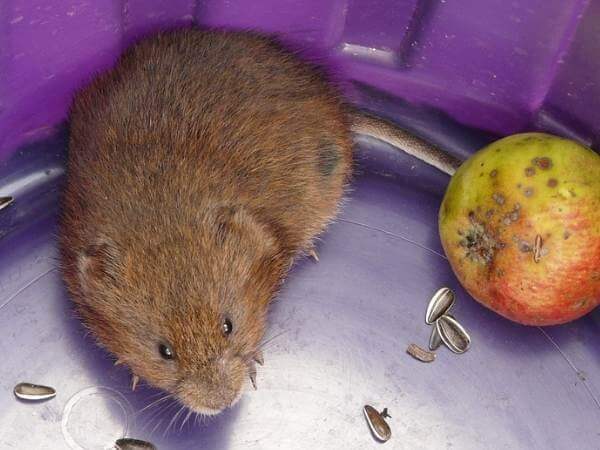Trusted Vole Control in Utah: Solutions for Your Property
Comprehensive Overview to Reliable Vole Pest Control: Problem Recognition and Therapy Techniques
In the world of reliable insect control, vole infestations posture a special difficulty that requires a strategic method. These small rats, commonly mistaken for mice, can wreak mayhem on gardens, grass, and crops if left uncontrolled. Identifying the indicators of vole existence and implementing targeted therapy approaches are vital elements of an effective pest management plan. By checking out the subtleties of vole behavior, understanding crucial indicators of infestation, and assessing a series of control alternatives, one can establish a comprehensive method to fight these evasive pests.
Comprehending Vole Habits
Vole behavior is identified by their burrowing practices and fast reproduction rates, making them a difficult bug to regulate properly. These tiny rats typically create intricate tunnel systems underground, using them for shelter, food storage, and transport. Voles are herbivores, taking in a selection of plants, origins, bulbs, and grasses, which can create significant damages to yards, orchards, and yards. Their fast reproductive rate additional complicates control efforts, with females capable of creating multiple trashes in a single year, each including a number of children.
Voles are most active throughout the very early morning and evening hours, spending most of their time foraging for food. Their delving habits not only disturb gardens and lawns but likewise make them challenging to detect and remove. Understanding vole habits is crucial for effective parasite control approaches. By recognizing their burrow areas, keeping track of feeding locations, and carrying out targeted control methods, such as trapping or environment modification, vole problems can be handled efficiently.
Indicators of Vole Problem

Avoidance Techniques
Applying efficient avoidance strategies is essential in reducing vole invasions and guarding vegetation from their damaging feeding practices (vole yard damage). To avoid vole infestations, it is necessary to start by removing potential food resources and shelter. Maintain grass and greenery cut short, remove weeds and particles, and maintain a neat garden or yard to make the location less eye-catching to voles. Setting up barriers such as equipment cloth or underground secure fencing can additionally aid hinder voles from going into specific areas. In addition, decreasing excess wetness by repairing dripping pipelines and making certain proper drain can make the setting less hospitable for voles.
Frequently examining the residential or commercial property for signs of vole activity, such as paths and tunnel openings, is important for very early detection and timely activity. Take into consideration utilizing repellents or traps purposefully placed near their paths if vole activity is presumed. Utilizing natural predators like snakes or owls can likewise aid keep vole populations in check. By executing a combination of these prevention strategies, property owners and garden enthusiasts can effectively protect their plant life from vole damage.
Non-Lethal Control Techniques
To successfully take care of vole populaces while focusing on gentle techniques, non-lethal control methods offer useful services for lowering vole damage in gardens and landscapes. These barriers can be hidden at the very least 12 inches deep and bent at a 90-degree angle to protect against voles from burrowing below.

Lethal Control Options
One efficient method for addressing vole problems in yards and landscapes entails the strategic usage of deadly control alternatives. When best site encountered with an extreme vole infestation that non-lethal methods have stopped working to have, applying deadly control measures comes to be important. On the whole, when employing lethal control alternatives, it is essential to do so responsibly and in accordance with neighborhood guidelines to effectively take care find here of vole problems.
Final Thought
Finally, reliable vole insect control needs a comprehensive understanding of vole behavior, identification of indicators of problem, implementation of prevention strategies, and application of both lethal and non-lethal control techniques. By incorporating these techniques, people can successfully handle vole populaces and protect their residential or commercial property from damages. It is essential to attend to vole problems promptly to avoid more issues and lessen the influence on the surrounding atmosphere.
Offered the detailed tunnel systems and fast recreation rates characteristic of voles, acknowledging the indicators of vole problem ends up being necessary in reliable bug control. One of the primary signs of vole presence is the visibility of surface area paths or trails in lawn or snow, typically concerning 1-2 inches broad, produced as voles take a trip in between their burrows and food resources.To efficiently manage vole populaces while focusing on humane techniques, non-lethal control approaches offer useful remedies for minimizing vole damage in landscapes and yards.One efficient approach for attending to vole problems in landscapes and gardens includes the Continued tactical use of deadly control choices. vole lawn damage.In verdict, efficient vole bug control calls for a comprehensive understanding of vole behavior, recognition of indicators of problem, execution of avoidance methods, and use of both deadly and non-lethal control techniques